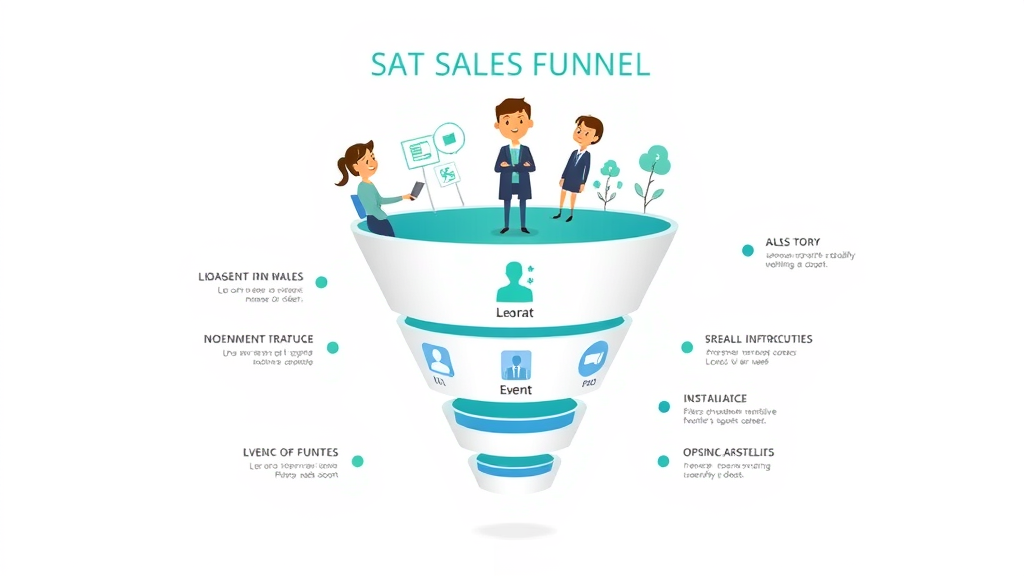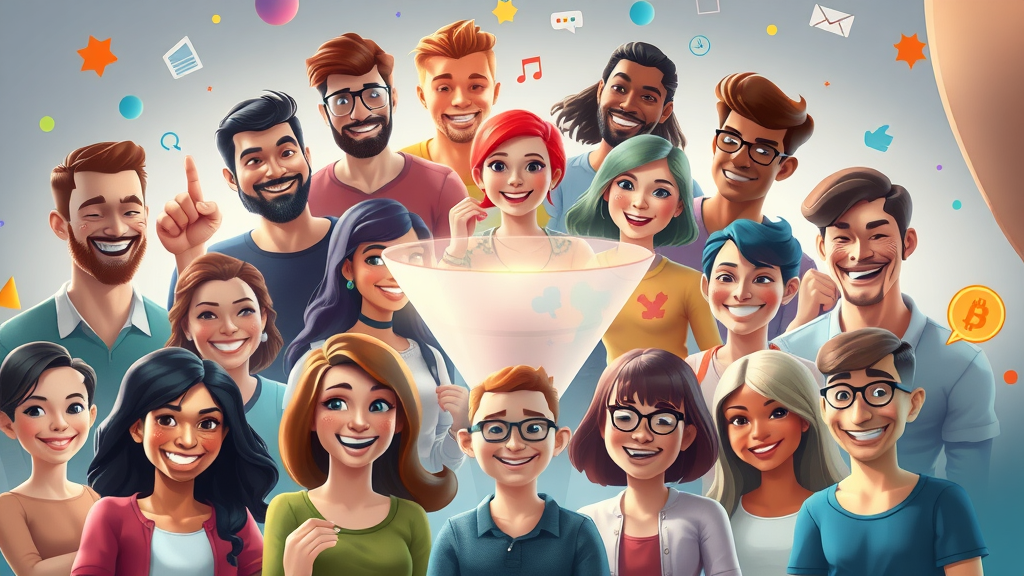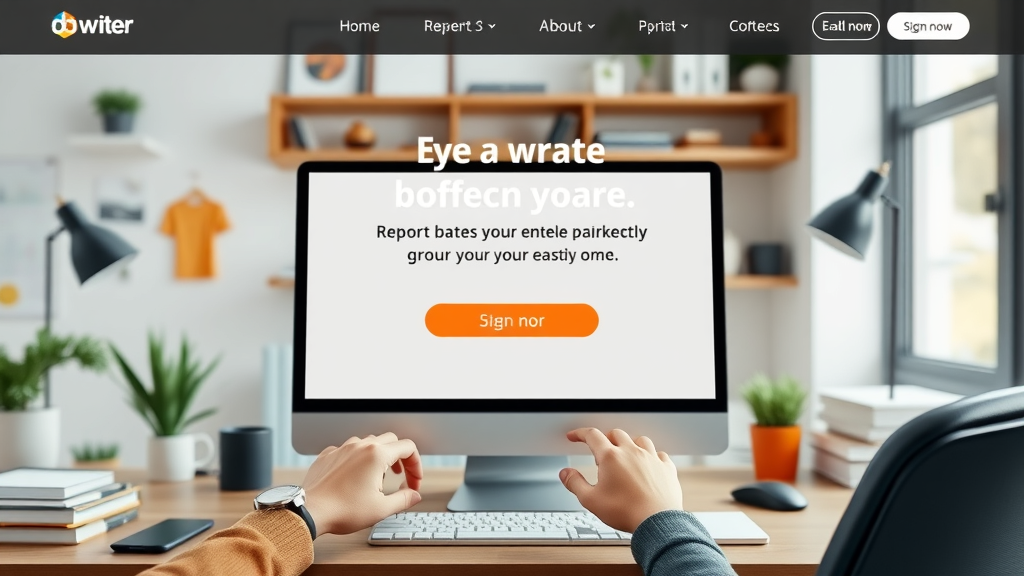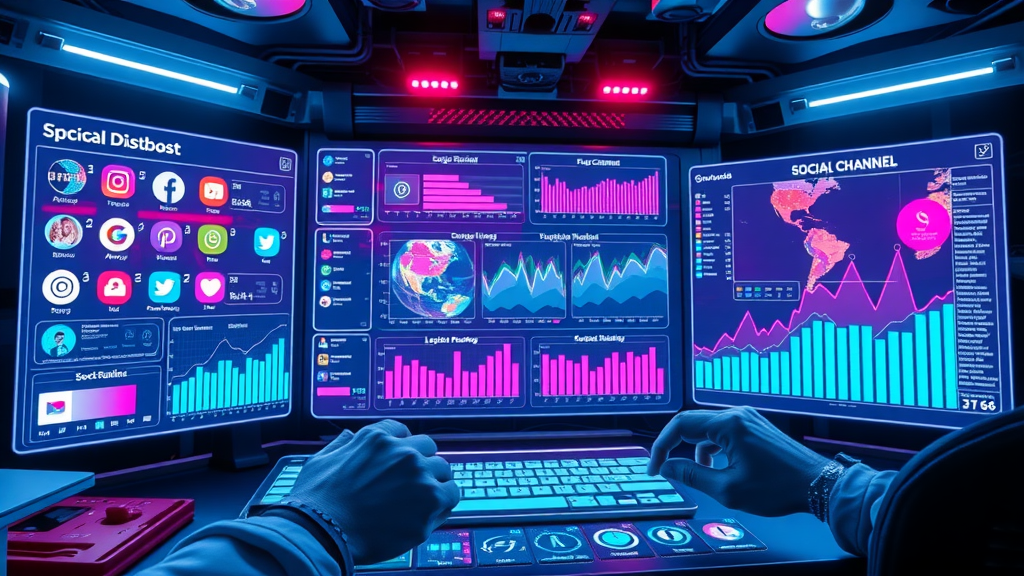- Did you know that businesses using a strategic funnel building approach experience up to 50% higher lead conversion rates? This comprehensive guide will show you step-by-step how to design a funnel that sells for you—unlock the pathway to consistent customers and revenue.

Master Funnel Building: The Foundation of Every Effective Sales Funnel
- Explore why funnel building is considered an essential skill for every marketer and entrepreneur. See real-world funnel examples and discover how a fully-optimized sales funnel and marketing funnel amplifies conversion success.
In today’s ever-evolving digital market landscape, funnel building has become the backbone of high-performing marketing strategies. Not only does effective sales funnel design ensure a structured approach to guiding potential customers from their first touch to final purchase, but it also provides clarity for tracking, optimization, and forecasting. For entrepreneurs and marketing teams alike, mastering funnel building means unlocking new levels of lead generation , nurturing, and ultimately, increased sales. Practical examples abound—from SaaS businesses using an automated webinar funnel to capture email addresses , to e-commerce brands deploying multi-step sales funnels designed to maximize cart value. Consider how landing pages, social media promotion, and targeted ads work together in a well-oiled marketing machine. By adopting a strategic approach to funnel building , every step—awareness stage, consideration stage, and decision stage—amplifies both immediate conversion rate and long-term customer loyalty. If you’re aiming for effective sales funnel results, the key lies in foundation-laying: understanding your buyers, mapping their journey, and continuously optimizing each funnel stage. Skilled funnel building creates ongoing opportunities for engagement and revenue growth, making it a non-negotiable competitive edge in both B2B and B2C spaces.
The Anatomy of Funnel Building: Sales Funnel and Marketing Funnel Essentials
- Understand the phases of effective sales funnels, from brand awareness to decision stage. Learn how funnel building maps directly to customer journey stages and aligns marketing funnel strategy with buyer intent.

Every sales funnel or marketing funnel follows a strategic framework, mapping the customer journey with precision. The journey begins in the awareness stage , where the primary goal is to attract a broad audience and introduce them to your brand awareness campaigns. Next is the consideration stage , where potential customers actively seek solutions, engage with content, and compare offers, often interacting with your landing page, blog posts, and email marketing. Finally, the decision stage emerges as the critical turning point—here, the prospective customer evaluates final options and takes steps toward a purchase decision. At each phase, funnel building ensures tailored content and marketing strategies, such as irresistible lead magnets at the top, case studies and free trials in the middle, and powerful CTAs and social proof at the bottom of the funnel. Successful funnel builders use automation and analytics to optimize these transitions for both efficiency and repeatability. Aligning your marketing funnel strategy to the buyer’s intent at every stage is what transforms a generic campaign into an effective sales funnel . With well-defined funnel mapping, every touchpoint—from a social media ad to a retargeted email sequence—is purposeful, measurable, and laser-focused on leading potential customers to conversion.
Awareness Stage: Capturing Attention in Funnel Building
- Techniques for boosting brand awareness and lead generation at the funnel’s top: content marketing, SEO, and social media campaigns that fill the sales funnel with quality prospects.
The awareness stage sets the tone for your entire funnel building process. Here, your aim is to cast the widest net possible—using engaging blog posts, viral social media content, and SEO-optimized assets to build brand awareness . The goal? To reach your target audience with messaging that resonates, answers their pain points, and piques their curiosity. Leveraging paid marketing campaigns and organic channels, savvy marketers introduce their product or service as the solution potential customers have been seeking. High-performing marketers often rely on lead magnets such as free guides, quizzes, or webinars, compelling prospects to exchange their email address for value-filled content. This not only kickstarts lead generation but also seeds your email marketing list for the next funnel stage. By closely monitoring top-of-funnel KPIs—like traffic spikes, engagement rates, and new opt-ins—organizations can identify what truly captures their audience's attention and refine their awareness strategies accordingly. In sum, a strong focus on content marketing and omnichannel social media activity generates a pipeline of quality prospects entering your sales funnel , setting the stage for effective nurturing and eventual conversion.
Consideration Stage: Nurturing Leads with Funnel Building
- Best practices for engaging leads with landing pages, email marketing sequences, and tailored marketing messages that drive users further along the sales funnels.
The consideration stage is all about deepening brand relationships and helping your target audience evaluate your offering against their needs. Here, landing pages become a vital conversion asset—each crafted with compelling copy, pain point-driven headlines, and a focused value proposition to keep prospects seeking more. Paired with smart email marketing sequences that educate, provide case studies, and answer objections, you’ll build trust and prime users for their purchase decision. Savvy funnel builders employ segmentation to ensure the right messages reach the right prospective customer at the right time. Behavioral triggers, personalized drip campaigns, and retargeting ads provide ongoing touchpoints across multiple channels, keeping your solution top-of-mind as buyers compare options. This phase is also where testimonials, free trials, and interactive content—like demos—can be leveraged to address concerns and reinforce credibility. Marketing messages must subtly guide potential customers toward the next logical step, progressing them through the funnel towards that crucial decision stage .
Decision Stage: Converting Leads in Sales Funnel Building
- Conversion optimization tactics for the critical decision stage, including persuasive landing pages, scarcity tactics, retargeting, and compelling offers that define an effective sales funnel.
The decision stage is where all your funnel building efforts culminate. At this point, the prospective customer is comparing a shortlist of solutions, often weighing specifics like value, risk, trust, and urgency. Standout landing pages at this stage use powerful social proof—think case studies, testimonials, and client logos—to reinforce credibility. Scarcity tactics, such as limited-time discounts or bonus add-ons, create a sense of urgency that nudges action. Retargeting campaigns play a crucial role, re-engaging those who didn’t immediately convert with reminders of the benefits of your product or service . Effective sales funnel operators understand the power of compelling offers here—whether that’s a free trial, discounted upgrade, or risk-free guarantee—to clear the final purchase obstacles. To monitor effectiveness, always track your bottom-of-the-funnel metrics, such as conversion rate, cost per acquisition (CPA), and average order value. Data from this stage is invaluable for informing continuous funnel optimization and refining your marketing strategy to boost ROI over time.
| Stage | Sales Funnel | Marketing Funnel | Key Metrics |
|---|---|---|---|
| Awareness | Ads, Cold Outreach, Events | SEO, Content Marketing, Social Media | Traffic, Impressions, Engagement |
| Consideration | Consultations, Demos, Free Trial Offers | Email Nurturing, Blog Posts, Webinars | Lead Quality, Email Opens, CTR |
| Decision | Sales Calls, Closing Offers, Proposals | Retargeting, Case Studies, Testimonials | Conversion Rate, CPA, Revenue |

Funnel Building and the Customer Journey: Mapping Your Prospect’s Pathway
- Dive into the customer journey, and see how funnel building supports each touchpoint from awareness through loyalty. Align sales funnels and marketing funnel strategy for seamless transitions and sustained engagement.
A customer journey spans far beyond the first click—it encompasses every experience, touchpoint, and emotion your potential customers encounter. Strategic funnel building ensures each transition is smooth, personalized, and intentional, ensuring no opportunity for connection is lost. By mapping the customer journey—awareness stage, consideration stage, decision stage, and post-purchase engagement—you can tailor messaging, content, and offers for each funnel stage. This alignment isn’t just about converting leads; it’s also about retaining them. A truly effective sales funnel extends to onboarding, support, upsells, and loyalty programs. By integrating your marketing funnel strategy with sales processes, you build seamless handoffs and consistent experiences, nurturing customers into repeat buyers. With the help of automation, data analytics, and omnichannel follow-up, today’s marketers can ensure continuity across devices and platforms, further enhancing the customer journey and fueling sustainable business growth.
Understanding Target Audience: The Key to Funnel Building Success
- How research into demographics, psychographics, and behaviors informs funnel building, ensures messaging resonates, and increases effective sales.

To build an effective sales funnel , knowing your target audience is non-negotiable. Researching and segmenting demographics (age, location, industry), psychographics (values, interests, motivators), and behavior (online habits, buying process) is crucial. This intelligence underpins every headline, CTA, and product offer, ensuring your content strikes a chord with potential customers. Successful marketers use tools like Google Analytics, social listening platforms, and direct customer interviews to identify pain points and aspirations. Whether you’re creating blog posts, landing pages, or email campaigns, every tactic should align with your audience’s journey and anticipated objections. The more deeply you understand what drives your audience, the more efficiently you can segment campaigns, prioritize resources, and optimize conversions throughout your funnel. Understanding your audience doesn’t just boost short-term conversion rates —it builds a foundation for long-term brand advocacy and retention.
Crafting Irresistible Offers in Funnel Building
- Design offers and value propositions that accelerate movement through your sales funnel and marketing funnel alike.
"A well-designed funnel doesn’t just sell once—it builds loyal customers and repeat revenue." – Marketing Funnel Expert
At the heart of impactful funnel building is the ability to design offers your target audience can’t refuse. Whether it’s an exclusive discount, a bonus training module, or a risk-free trial, your value proposition must be clear, compelling, and actionable. Mapping out these offers across different funnel stages—awareness, consideration, decision—ensures your prospects feel consistently motivated to move forward. The most effective sales funnels often feature dynamic offers that evolve with buyer intent and urgency. For instance, an educational blog post or free trial may drive awareness, while a personalized case study or invitation-only webinar speaks to hotter prospects in the consideration stage. By the decision stage, timely incentives and guarantees tip the balance in your favor. Above all, your offers must be closely aligned with the pain points, objections, and aspirations of your audience at each funnel stage. This approach accelerates movement and cements your sales funnel as a trusted path from problem to solution.
Landing Pages and Lead Generation: Building Entry Points for Funnel Building
- Analyze high-performing landing pages and opt-in forms for effective funnel building and lead generation. Optimize sales funnels through compelling CTAs, smart design, and irresistible lead magnets.

Landing pages are the gateways to your funnel building strategy, acting as focused conversion engines for lead generation. The most successful sales funnels deploy landing pages with a single, crystal-clear goal: get the visitor to take action, whether that means providing an email address, signing up for a free trial, or downloading exclusive content. Well-optimized landing pages combine attention-grabbing headlines, persuasive body copy, and prominent call-to-action buttons. Lead magnets—such as checklists, eBooks, or webinar seats—can dramatically increase opt-in rates by offering instant, relevant value. Consider A/B testing layout, colors, and imagery to maximize conversion rates and inform higher-level marketing funnel strategy. Integration with analytics tools ensures every visitor’s journey is tracked, providing data-driven insights that empower you to continually refine messaging, test new offers, and ultimately drive more qualified leads into the middle and bottom of your effective sales funnel.
Landing Page Best Practices for Funnel Building
- Learn top design principles, copywriting formulas, and conversion triggers that drive results in both sales funnels and marketing funnels.

Creating high-converting landing pages is part art, part science. Start with a clear, benefit-driven headline that addresses a customer’s pain points or desires. Use concise, persuasive copy that guides visitors to your offer’s value—all while removing distractions like excessive navigation or external links that can dilute focus. Visual trust signals—like testimonials, third-party reviews, or security badges—add credibility. Implementing an obvious, compelling CTA (call-to-action) in contrasting color and above the fold encourages immediate engagement. Make forms short and simple; request only the minimum necessary info (often just an email address). Don’t underestimate the impact of mobile optimization—more than half your visitors likely arrive on a mobile device. Strong use of images and social proof can further reinforce message clarity and drive up conversion rate. Regular optimization, A/B testing, and analytics review ensure your landing pages are always working to boost your sales funnel’s performance.
Email Marketing Automation in Funnel Building
- Harness email marketing to educate, nurture, and convert leads. Discover sequences and automation techniques that fuel your entire sales funnel strategy.
Email marketing automation is the engine that nurtures new leads and drives continued engagement within your sales funnel . With well-timed, targeted sequences, you can educate prospective customers, share compelling case studies, and present timely offers that nudge them closer to a purchase decision. Best-in-class funnel building strategies use trigger-based emails—delivered based on specific actions, behaviors, or funnel stage. For example, new leads can be welcomed with a series explaining your solution, addressing common objections, and sharing testimonials. Inactive prospects might receive re-engagement campaigns or exclusive discounts. By monitoring metrics like open rates, click-through rates, and conversion rates, you can iteratively optimize sequences for maximum impact. Integrating segmentation and personalization at every step ensures your messaging remains relevant, driven by insights gleaned from your ongoing marketing funnel analytics.
Social Media Integration: Amplifying Funnel Building with Omni-Channel Marketing
- Leverage social media for brand awareness, retargeting, and audience engagement to fill and warm up your funnel at every stage of the customer journey.

Incorporating social media channels into your funnel building strategy is key for expanding your marketing funnel reach and increasing brand awareness. Platforms like Facebook, Instagram, LinkedIn, and TikTok let you target specific audiences, build communities, and drive highly qualified traffic to your landing page or blog posts at all funnel stages. Social media excels for top-of-funnel awareness—leveraging paid ads, influencer partnerships, and shareable content to capture cold traffic. In the middle and bottom of the funnel, retargeting campaigns keep your brand front-and-center, reminding users of their interest and pushing them to reconsider your offer through dynamic, personalized messaging. Seamless integration across platforms amplifies campaign effectiveness, ensuring your funnel follows the customer journey across multiple touchpoints. Engaging users throughout their buying process not only increases conversions but also fosters long-term relationships and loyalty through ongoing value-driven interaction.
Optimizing Your Marketing Funnel: Metrics, Testing, and Continuous Improvement
- Key performance indicators (KPIs) and analytics to track at every funnel stage. How A/B testing, customer feedback, and data-driven adjustments fine-tune your effective sales funnel over time.
"Success in funnel building lies in relentless optimization—every small improvement compounds your results."
The work of funnel building doesn’t end once your structure is live—in fact, this is where continuous improvement begins. Monitoring KPIs like conversion rate, CPA (cost per acquisition), CLV (customer lifetime value), and funnel drop-off points uncovers hidden opportunities to tighten your sales process. A/B testing landing page elements, CTAs, email sequences, and ad creatives enables data-driven decision-making. Seek direct feedback from leads and paying customers to illuminate pain points or objections not captured by numbers alone. Tools like Google Analytics, Hotjar, and dedicated funnel dashboards make it easy to spot bottlenecks or underperforming touchpoints across your entire funnel. Remember: Even incremental changes—like adjusting a headline, reducing form fields, or altering offer presentation—can dramatically improve results. The most successful brands approach marketing funnel optimization as a process of ongoing evolution.
Marketing Funnel Strategies: Real-World Case Studies
- Examine case studies of brands that mastered funnel building—what they did, how they iterated, and the results they achieved.

Top brands share a common trait: a commitment to testing, learning, and refining their sales funnels . For instance, an online course provider improved their conversion rate by over 30% simply by optimizing landing page copy and integrating user testimonials at the decision stage. A SaaS company doubled its CLV (Customer Lifetime Value) in six months by adding post-purchase onboarding and loyalty incentives as new funnel steps. These case studies demonstrate that there’s no single funnel building “formula”—instead, the best performers constantly gather analytics, survey feedback, and run experiments to uncover what resonates for their unique audience. Each iteration, no matter how minor, compounds over time, fueling exponential business growth . Whatever your industry, modeling the practices of successful marketers—mapping their funnels, personalizing experiences, and leveraging multi-channel marketing campaigns —can provide inspiration and frameworks for your own funnel building strategy.
| Funnel Stage | Typical Conversion Rate | Avg. CPA | Avg. CLV |
|---|---|---|---|
| Awareness | 3-6% | $20-40 | N/A |
| Consideration | 17-25% | $40-90 | $250 |
| Decision | 30-45%+ | $100+ | $600+ |
Advanced Funnel Building: Automation, Personalization, and Scaling for Effective Sales
- Implement automation tools, AI, and segmentation to personalize every interaction and scale your sales funnels and marketing funnel for maximum impact.

The future of funnel building lies in leveraging technology to create scalable, highly-personalized experiences. Automation tools allow even lean teams to deliver sophisticated email marketing sequences, retargeting campaigns, and lead qualification without manual effort. Using CRM and funnel analytics, marketers can segment their audience based on real-time behaviors, tailoring messaging and offers to each funnel stage. Artificial intelligence is making inroads as well, serving up dynamic landing page content based on user profiles or optimizing ad spend across channels for the highest ROI. Personalization—right down to an individual’s name, company, or past behavior—transforms generic campaigns into meaningful, memorable experiences, dramatically improving conversion rates. As you scale, don’t neglect the human element: training teams to understand funnel analytics, deploy new tools, and keep the voice consistent ensures your sales process remains customer-centric, even as volume and complexity grow.
Scaling Up Your Funnel Building: From Solopreneurs to Multi-Channel Enterprises
- Best software, tools, and teams for taking funnel building to the next level.
Whether you’re a solopreneur or part of a large enterprise, scaling your funnel building efforts relies on smart investments in software, talent, and processes. Top picks include all-in-one funnel builders (like ClickFunnels or Leadpages), robust CRMs (such as HubSpot or ActiveCampaign), and marketing automation platforms that allow for complex segmentation and behavioral triggers. Larger organizations benefit by assembling cross-functional teams—combining copywriters, designers, funnel strategists, and developers—to collaborate on funnel mapping, A/B testing, and performance analysis. Cloud-based analytics platforms help to rapidly iterate, share learnings, and optimize at scale. No matter your size, continuous training and knowledge sharing is key: Encourage regular deep-dives into funnel metrics, competitor analysis, and the latest marketing funnel strategies to ensure your team's approach remains agile and up-to-date.
Funnel Building Step-by-Step: A Practical Checklist
- Define your target audience .
- Map your customer journey .
- Design compelling offers.
- Create high-converting landing pages .
- Set up email marketing automation.
- Integrate with social media .
- Test, analyze, and optimize.
Common Funnel Building Mistakes (and How to Avoid Them)
- Learn the pitfalls that kill effective sales funnels—from unclear messaging to unoptimized landing pages—and how to fix them.

Even the most promising funnel can falter if basic principles aren’t followed. Common mistakes include failing to clarify your value proposition , neglecting mobile optimization on landing pages, and sending disjointed or irrelevant email marketing sequences. Overly complex forms and unclear CTAs can lead to high drop-off and lost leads. Ignoring audience segmentation means your messages miss the mark, reducing overall funnel effectiveness. Survivable, these pitfalls are easily fixed: Start with regular usability tests of your landing pages, analyze drop-off points in your funnel analytics, and collect honest feedback from prospective customers. Align every piece of copy with a funnel stage and objective. Always be willing to tweak and test, treating your sales process as a living, evolving experience rather than a set-and-forget checklist. Remember, continuous improvement and a customer-centric mindset are your greatest assets in fine-tuning an effective sales funnel.
People Also Ask
What is funnel building?
- Funnel building is the strategic process of designing marketing and sales funnels that guide potential customers from initial awareness to conversion and beyond. It involves mapping the customer journey, creating relevant touchpoints, and optimizing each stage for maximum conversion and retention.
Is funnel building a high income skill?
- Yes, funnel building is considered a high income skill. As businesses increasingly rely on digital marketing, demand for professionals who can design, implement, and optimize effective sales funnels and marketing funnels has soared, enabling them to command premium fees.
What does funnel mean in business?
- A funnel in business refers to the visual representation of the customer journey—mapping potential buyers from their first interaction with a brand through various stages (awareness, consideration, decision) until they become customers.
How much do funnel builders make?
- Funnel builders can earn from $3,000 to over $10,000 per project, depending on scope, experience, and results. Full-time funnel strategists and consultants may command six-figure annual incomes given the value they provide in driving revenue for clients.
Frequently Asked Questions About Funnel Building
- What are the main differences between a sales funnel and a marketing funnel? A sales funnel is focused primarily on the steps leading a prospect to a purchase decision, with heavy involvement from sales teams and direct calls to action. A marketing funnel, meanwhile, encompasses the broader customer journey, emphasizing brand building, education, and nurturing to drive long-term relationships and repeat business.
- How long does it take to build an effective funnel? Depending on complexity, industry, and resources, building an effective funnel can take anywhere from a week for a basic setup to several months for multi-touch, omni-channel systems. Continuous optimization is key to sustained performance.
- Can funnel building work for all industries? Absolutely. Whether you're B2B, B2C, e-commerce, SaaS, or services, custom funnel building adapts to different sales cycles and customer needs, supporting lead generation and conversions in virtually any niche.
- What tools are best for funnel building? Top choices include ClickFunnels, Leadpages, HubSpot, ActiveCampaign, Unbounce, and Google Analytics—each offering specialized features for automation, analytics, and seamless marketing funnel integration.
- How do I know if my funnel is working? Regularly review metrics like conversion rates, CPA, funnel drop-off points, and customer feedback. Steady improvement in these key indicators signals your funnel building efforts are paying off.
Essential Resources and Tools for Funnel Building Excellence
- Recommended platforms, funnel mapping software, analytics tools, email automation solutions, and social media schedulers for optimizing your sales funnel and enhancing your marketing funnel strategy.
- Popular platforms: ClickFunnels, Leadpages, HubSpot CRM, ActiveCampaign, ConvertKit
- Funnel mapping: Funnelytics, Miro, Lucidchart
- Analytics: Google Analytics, Hotjar, Heap
- Email Automation: Mailchimp, ConvertKit, Drip
- Social Media Schedulers: Hootsuite, Buffer, Sprout Social
Ready to unlock your business growth with professional funnel building expertise?
- Take your marketing funnel and sales funnel to new heights. Ready to grow your business? Book your free marketing strategy session with our team today. https://aaronmills.marketing/
Conclusion
Start by understanding your audience and mapping their journey. Create offers and landing pages that convert, then optimize with automation and analytics for unstoppable funnel building success.
To deepen your understanding of funnel building and enhance your sales strategies, consider exploring the following resources:
-
“A Comprehensive Guide To Understanding Funnel Building in 2023” offers an in-depth look at the essential tools and resources necessary for effective funnel creation, including CRM systems, marketing automation platforms, and analytics tools. ( toplyne.io )
-
“Funnel Building: Step-By-Step Guide for Marketers” provides a detailed walkthrough of the funnel building process, from defining goals and identifying target audiences to mapping out funnel stages and optimizing for better results. ( mountain.com )
These resources will equip you with practical insights and strategies to design and implement high-converting sales funnels tailored to your business needs.
 Add Row
Add Row  Add
Add 



Write A Comment